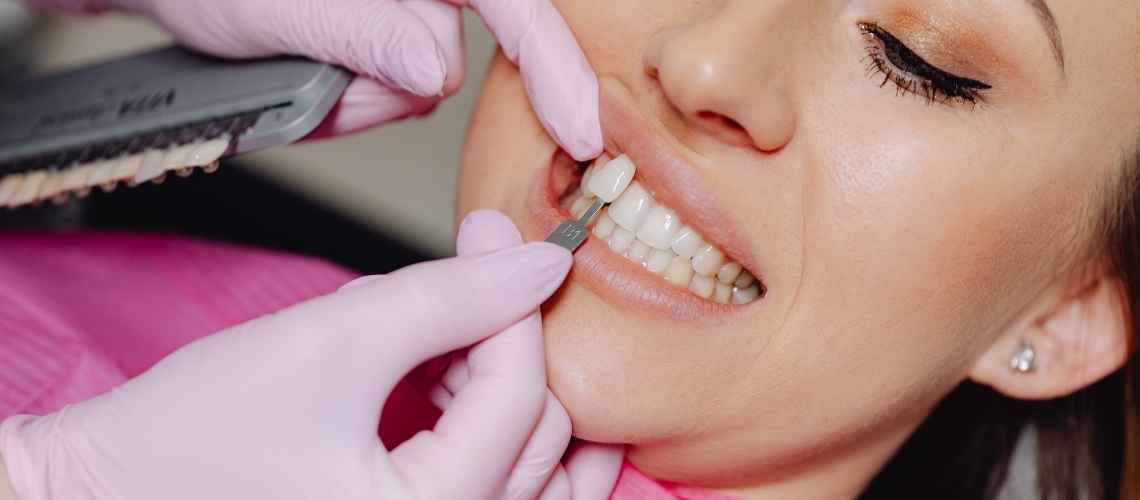It depends on the problem you’re trying to solve whether you should get dental implants or veneers. Simply stated, dental implants end up replacing missing teeth, while veneers improve the appearance of your smile.
Veneers are a great option for giving you a lovely smile in a short amount of time if you have healthy teeth but purely aesthetic issues such as stains, chips, or gaps.
If you have a more serious issue with your oral health, such as missing teeth, bone loss, or receding gums, dental implants will be a better option as a stable attachment point for artificial teeth.
Your jawbone recedes while you are missing teeth for any reason. The bone continues to shrivel unless tooth roots are present to stimulate it. Bone loss can have a negative impact on not only your mouth, but your overall health as well.
You’ll appear older, your mouth won’t function or work as it should, and many of your daily activities will be jeopardized. You may believe that bone loss is not affecting you because it is painless; however, it is a silent process. Everyone who has missing teeth experiences bone loss in the jaws.
Dental implants are the best option available when you have missing teeth, both for your dental health and for your overall health. Veneers are the best option for those who have their natural teeth but want to improve their appearance.
Veneers are thin porcelain restoration work that protect the front textures of teeth to improve their appearance and improve your smile.
Dental implants are described in detail.
Dental implants are artificial tooth roots that are used to secure replacement teeth in a natural way. They are extremely durable, stable, and strong, and will last for many years; however, due to normal wear, they may need to be replaced or tightened on occasion.
- Dental implants are used for a variety of reasons.
- Replacing one or more missing teeth without affecting the neighboring teeth is possible.
- Teeth shifting into missing tooth spaces can cause joint pain and bite problems.
- Restore a patient’s self assurance through their smile.
- Chewing, speech, and digestion are all restored.
- Restore or improve the appearance of facial tissues.
- A bridge or denture can be supported, making it more secure and comfortable.
- Veneers are explained in detail.
- If you want a great looking smile in the shortest amount of time, porcelain veneers are a great option.
Dental veneers are a great way to hide chips, breaks, stains, and gaps in your teeth. They are applied to both the top and bottom teeth, and their appearance is similar to that of natural teeth.
Are there any Issues with Veneers?
Veneers can shift if they are not properly bonded to your teeth. If this happens, your teeth may recede from your gum line, resulting in future problems like tooth decay and gum disease. In addition, veneers typically last about 10-15 years before they need to be replaced.
Dental implants are typically a life-long solution, lasting 25 to 30 years on average. To provide a stable anchor for artificial teeth, dental implants are inserted and attached directly to bone.
The Typical Procedure for Placing One Dental Implant is as Follows:
- The tooth that is causing the problem is extracted.
- If the jawbone is not thick or strong enough, it will be prepared for surgery, which may include bone grafting.
- A hole is made into the bone after an incision is created into the gum to expose it.
- Inside this hole inside the jawbone, a dental implant metal post is used to recreate a tooth root.
- During the healing process, a transitory false teeth or may not be provided for aesthetic reasons.
- After many months of recovery, the jawbone osseointegrates, forming the foundation for the false tooth.
- A dentist will reopen the gum to expose the metal post in a second minor surgery performed under local anesthesia.
- After that, the abutment will be attached to the post and the gum tissue will be closed around it.
- Following a one to two week healing period, the artificial tooth is screwed into the abutment.
The Following is a Typical Procedure for Installing Veneers:
- On the surface of the teeth, about a tenth of a millimeter of enamel is removed.
- A model of the teeth without the enamel will be created and sent to a lab for the veneers to be made.
- After the veneers are made, they are returned to the dentist to be fitted to the natural teeth.
- If the veneers aren’t perfect, the dentist will trim them to fit properly.
- The teeth will be cleaned, polished, and etched once they have the proper fit and appearance. The bonding process is made easier as a result of this.
- The veneers are then cemented in place before being placed on the natural teeth.
- A special light beam is used to activate the chemicals in the cement, causing it to harden quickly.
- Bite demonstrations take place after excess cement is removed.
- Any necessary adjustments, such as trims or more cement, are made to the veneers.








